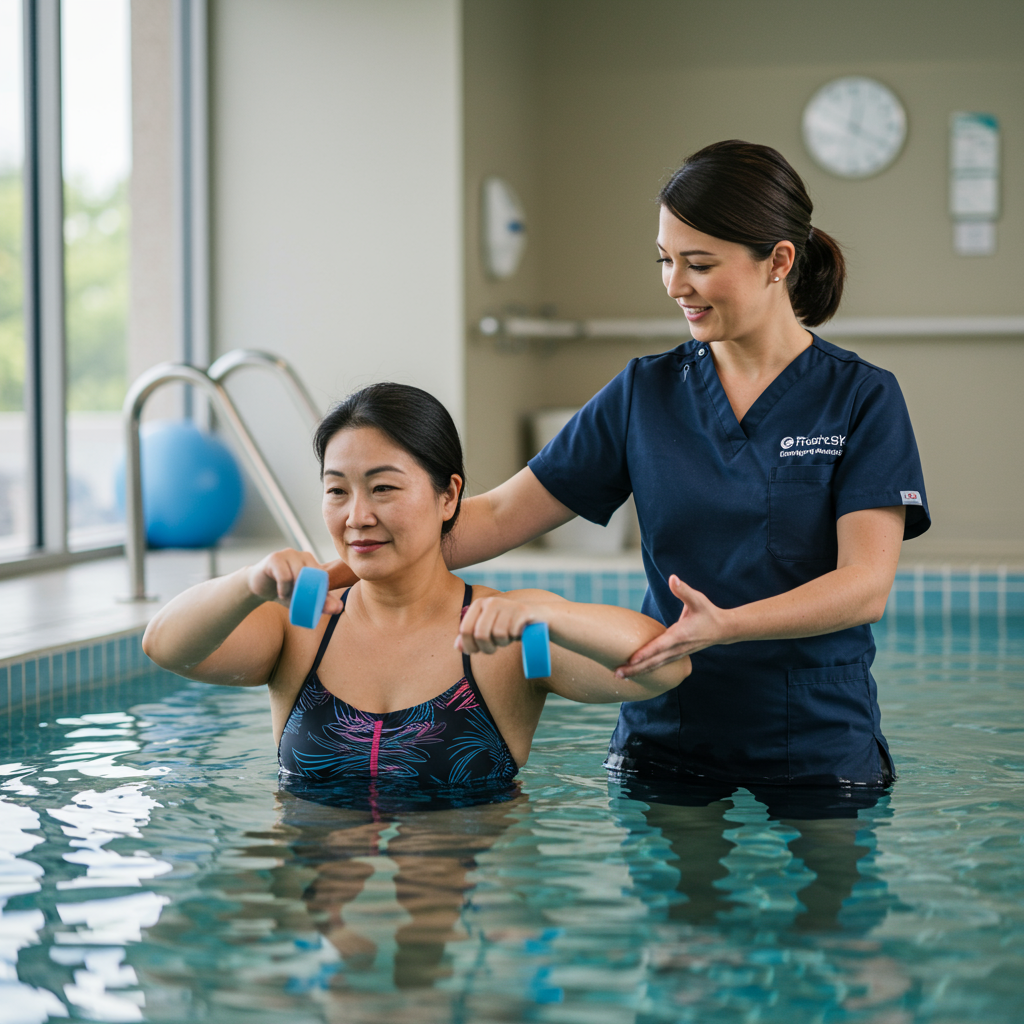Recovering after surgery can feel like an uphill battle. The journey back to strength, mobility, and normal daily life is challenging, and the thought of starting an exercise routine might seem daunting, especially when your body is still healing. But there’s good news: a supportive, effective pathway to regaining your physical and mental well-being might be waiting right in the water.
Heading to a pool for aquatic exercise or therapy is increasingly recognized as a powerful alternative or complement to traditional land-based physical therapy. Research, including recent studies, highlights the significant benefits water-based movement can offer patients recovering from various surgical procedures.
Why Water Works for Post-Surgery Rehab
The unique properties of water make it an ideal environment for gentle yet effective rehabilitation:
Buoyancy: Water supports a significant portion of your body weight. This reduces the stress and impact on healing joints, muscles, and incisions, allowing you to move with less pain and fear.
Resistance: Moving through water provides natural resistance in all directions. This allows you to build strength and improve muscle tone without needing external weights, making it safer for recovering tissues.
Warmth (in heated pools): Warm water can help relax muscles, reduce stiffness, and increase circulation, further promoting comfort and healing.
Key Physical Benefits of Aquatic Exercise
Engaging in a supervised aquatic program after surgery can lead to a range of physical improvements:
Reduced Pain and Inflammation: The hydrostatic pressure of water combined with warmth and gentle movement can help decrease swelling and soothe sore areas, leading to significant pain relief.
Improved Strength and Flexibility: Water resistance provides a safe way to rebuild muscle strength lost during recovery and improve range of motion and flexibility in compromised joints.
Enhanced Circulation: Moving in water can boost blood flow throughout the body, which is crucial for delivering oxygen and nutrients to healing tissues and aiding the body’s natural recovery processes.
Faster Regaining of Mobility: The supportive environment allows individuals to begin walking, stretching, and performing exercises sooner than they might be able to on land, accelerating the return to functional movement.
Combating Fatigue and Muscle Weakness: Gentle, consistent activity in water can help counter the common post-operative issues of fatigue and overall muscle weakness, gradually increasing endurance and stamina.
Boosting Mental and Emotional Well-being
Recovery isn’t just physical; it’s also deeply tied to your mental and emotional state. Aquatic exercise offers profound psychological benefits:
Stress Reduction and Mood Improvement: Exercise, particularly in a calming environment like water, can help reduce anxiety, alleviate symptoms of depression, and improve overall mood. The focus on movement and the soothing nature of water can provide a welcome distraction from recovery stresses.
Enhanced Relaxation and Better Sleep: The combination of gentle exercise and the therapeutic effect of water can promote relaxation, making it easier to fall asleep and improving sleep quality – vital components of the healing process.
Sense of Progress and Empowerment: Being able to move and exercise effectively in the water, even when land-based activities are difficult, can build confidence, reduce feelings of helplessness, and provide a tangible sense of progress in your recovery journey.
Getting Started Safely
While the benefits are numerous, it’s crucial to approach post-surgery exercise thoughtfully.
Consult Your Doctor: Always speak with your surgeon or healthcare provider before starting any new exercise program, including aquatic therapy. They can advise if water is safe for your specific surgery type and stage of recovery, considering factors like wound healing.
Seek Professional Guidance: Working with a qualified physical therapist or exercise physiologist, especially one experienced in aquatic rehabilitation, is highly recommended. They can design a personalized program tailored to your needs, limitations, and recovery goals, ensuring you perform exercises correctly and safely.
Start Slowly and Listen to Your Body: Begin with short sessions and gentle movements, gradually increasing duration and intensity as your strength and stamina improve. Pay close attention to how your body feels and avoid pushing through significant pain.
Water offers a unique and effective path for post-surgery recovery, providing essential support while allowing you to rebuild strength and well-being. By incorporating aquatic exercise into your rehabilitation plan, you can potentially ease the recovery process, accelerate healing, and dive into a stronger, healthier future.



